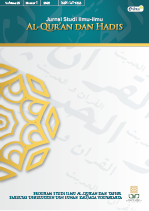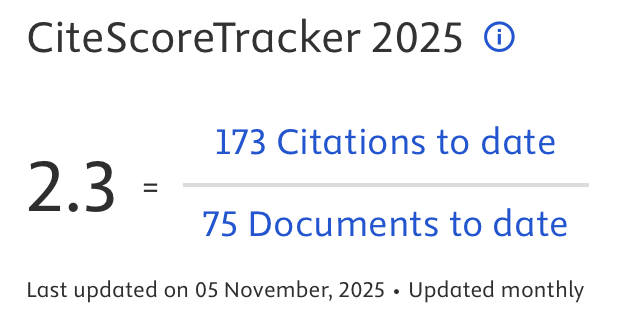The Implementation of Disaster Mitigation based on Qur’anic Interpretation: Muhammadiyah Case Study
DOI:
https://doi.org/10.14421/qh.2022.2301-07Keywords:
Disaster, Disaster Mitigation, Qur’an, MuhammadiyahAbstract
Most Indonesian’s live in vulnerable areas. Various kinds of disasters come alternately with the victims of property and humans. However, there are some people who feel that the disaster is a punishment. This leads to preventive measures or disaster mitigation that are carried out to reduce casualties not to be done, except the appeal not to sin. Muhammadiyah is one of the Islamic organizations that have concerns about disaster mitigation. This research reveals how Muhammadiyah's perspective on disaster mitigation is. How is the initiation done for the objectivation of mitigation disaster? In addition, see the form of the program carried out as a form of internalization of disaster mitigation in Muhammadiyah. This research is qualitative research using two approaches, namely living Qur'an and phenomenology. The construction of Muhammadiyah's positive understanding of disasters and disaster mitigation stems from the study of two groups of Qur'anic verses, First, on causality, which is to fully understand why a disaster occurs. Verses studied include az-Zumar (39):9; an-Naml (27):88; Ghafir (41:21). Second, man's role as caliph governs the universe. Verses studied include az-Zumar (39):18; al-Hashim (59:18); al-Ahzab (33:72); and al-Qasas (28:77). The initiation of disaster mitigation was carried out by Muhammadiyah after the tsunami in Aceh in 2004 and strengthened after the great earthquake in Yogyakarta in 2006. Its main programs are fostering Disaster Resilient Communities, Disaster Safe Schools, and Disaster Safe Hospitals. A positive view of disasters, a friendly attitude with nature based on science. In addition, preventive disaster mitigation measures are the findings of this study. These three attitudes need to be socialized to Indonesian people who live in vulnerable areas.
 Abstract viewed: 575 times
|
Abstract viewed: 575 times
|
 PDF downloaded = 441 times
PDF downloaded = 441 times
References
Adi Seno. “Karakterisasi Bencana Banjir Bandang Di Indonesia.” Jurnal Sains dan Teknologi Indonesia 15, no. 1 (2013): 42–51. http://103.224.137.161/index.php/JSTI/article/viewFile/938/770.
As’ad, Muhammad. “The Muhammadiyah Criticism against Mawlid Tradition over Centuries.” Journal of Indonesian Islam 13, no. 2 (2019).
Baidhawy, Zakiyuddin. “The Role of Faith-Based Organization in Coping with Disaster Management and Mitigation Muhammadiyah’s Experience.” Journal of Indonesian Islam 9, no. 2 (2015): 167–194. http://jiis.uinsby.ac.id/index.php/JIIs/article/download/230/169.
Bela, Dinda Rosanti Salsa, Achmad Nurmandi, Isnaini Muallidin, Danang Kurniawan, and Salahudin. Effectiveness of Disaster Mitigation Information by National Disaster Relief Agency in Indonesia. Lecture Notes in Networks and Systems. Vol. 319. Springer International Publishing, 2022. http://dx.doi.org/10.1007/978-3-030-85540-6_16.
Biyanto. “The Typology of Muhammadiyah Sufism: Tracing Its Figures’ Thoughts and Exemplary Lives.” Indonesian Journal of Islam and Muslim Societies 7, no. 2 (2017).
Budiarti, Wiwin, E V I Gravitiani, and D A N Mujiyo. “Flood Mitigation Efforts in Samin Sub-Watershed through the Disaster Resilient Community Development” 18, no. 2 (2017): 241–250. http://ejurnal2.bppt.go.id/index.php/JTL/article/download/962/1881.
Burhani, Ahmad Najib. “Pluralism, Liberalism and Islamism: Religious Outlook of Muhammadiyah.” Studia Islamika 25, no. 3 (2018).
Bush, Robin. Muhammadiyah and Disaster Response: Innovation and Change in Humanitarian Assistance, 2015. http://ndl.ethernet.edu.et/bitstream/123456789/33293/1/104.Caroline Brassard.pdf#page=26.
Chandra, Rangga K., and Rima Dewi Supriharjo. “Mitigasi Bencana Banjir Rob Di Jakarta Utara.” Jurnal Teknik Pomits 2, no. 1 (2013): 25–30. https://ejurnal.its.ac.id/index.php/teknik/article/viewFile/2465/792.
Dewi, Indarti Komala, Yossa Istiadi, and Yossa Istiadi. “Mitigasi Bencana pada Masyarakat Tradisional dalam Menghadapi Perubahan Iklim di Kampung Naga Kecamatan Salawu Kabupaten Tasikmalaya (Disaster Mitigation on Traditional Community Against Climate Change in Kampong Naga Subdistrict Salawu Tasikmalaya).” Jurnal Manusia dan Lingkungan 23, no. 1 (2016): 129. https://journal.ugm.ac.id/JML/article/download/18782/12113.
Dewi, Rikha Surtika, and Nadhini hudha Anggarasari. “Mitigasi Bencana Pada Anak Usia Dini.” Early Childhood : Jurnal Pendidikan 3, no. 1 (2020): 68–77. https://umtas.ac.id/journal/index.php/Earlychildhood/article/download/438/476.
Fatta, Firda Nur, Tika Melinda, Rose Anna Anggun Fajariyah, Rawi Akbar Pratama, Dhandy Armikko Putro, and Zaid Ali Wardana. “Kajian Sarana Prasarana Pendukung Kesiapsiagaan Sekolah Terhadap Bencana Gempabumi Di Smp Muhammadiyah 3 Cawas.” JPIG (Jurnal Pendidikan dan Ilmu Geografi) 5, no. 1 (2020): 56–66. https://ejournal.unikama.ac.id/index.php/JPIG/article/download/4054/2534.
Hamida, Fakhryza Nabila, and Hasti Widyasamratri. “Risiko Kawasan Longsor Dalam Upaya Mitigasi Bencana Menggunakan Sistem Informasi Geografis.” Pondasi 24, no. 1 (2019): 67. http://jurnal.unissula.ac.id/index.php/pondasi/article/download/4997/3180.
Hidayati, Hidayati, Rima Rahmaniah, M Hudri, Irwandi Irwandi, and Moh Fauzi Bafadal. “Disaster Mitigation Training (Pelatihan Mitigasi Bencana) Untuk Anak Usia Dini Di Muhammadiyah Boarding School Sang Surya, Kota Mataram.” SELAPARANG Jurnal Pengabdian Masyarakat Berkemajuan 3, no. 2 (2020): 211. http://journal.ummat.ac.id/index.php/jpmb/article/download/2195/1481.
Hossain, Md Nazir, and Shitangsu Kumar Paul. “Vulnerability Factors and Effectiveness of Disaster Mitigation Measures in the Bangladesh Coast.” Earth Systems and Environment 2, no. 1 (2018): 55–65. https://doi.org/10.1007/s41748-018-0034-1.
Jotshi, Arun, Qiang Gong, and Rajan Batta. “Dispatching and Routing Vehicles in Disaster Mitigation Using Data Fushion.” Socio-Economic Planning-Sciences, no. 43 (2009): 1–24. http://www.acsu.buffalo.edu/~batta/papers/Jotshi_Gong_Batta_SEPS.pdf.
Khulaimah, Musyfiqah. Perilaku Manusia Atas Nikmat Allah Dan Ketiadaannya Dalam Al- Qur’an, 2018. http://repository.uinjkt.ac.id/dspace/bitstream/123456789/43211/1/KHULAIMAH MUSYFIQAH-FUF.Pdf.
Kurniawan Pratama, Tomi, Ruli Ratna Sarir, Nurul Zakhra Utami, Ana Zairotul Mufidah, Lintang Setyadi, and Puspita Indra Wardani. “Respon Mitigasi Bencana Gempa Bumi Di SMP M 7 Bayat Dan SMP MBS 2 Prambanan.” Jurnal Geografi, Edukasi dan Lingkungan (JGEL) 4, no. 1 (2020): 39–49. https://journal.uhamka.ac.id/index.php/jgel/article/download/4315/1371.
Latief, Hilman. “Philanthropy and ‘Muslim Citizenship’ in Post-Suharto Indonesia.” Southeast Asian Studies 5, no. 2 (2016): 269–286. https://www.jstage.jst.go.jp/article/seas/5/2/5_269/_pdf.
Latief, Hilman, and Haedar Nashir. “Local Dynamics and Global Engagements of the Islamic Modernist Movement in Contemporary Indonesia: The Case of Muhammadiyah (2000-2020).” Journal of Current Southeast Asian Affairs 39, no. 2 (2020)
Li, Ying, Hongyi Cen, Tai Yu Lin, and Yung Ho Chiu. “Undesirable Epsilon-Based Model DEA Application for Chinese Natural Disaster Mitigation Efficiency.” SAGE Open 11, no. 3 (2021). https://journals.sagepub.com/doi/pdf/10.1177/21582440211040776.
Maryani, Enok. “Model Pembelajaran Mitigasi Bencana Dalam Ilmu Pengetahuan Sosial di Sekolah Menengah Pertama” Jurnal Pendidikan Geografi 10, no. 1 (2010). https://ejournal.upi.edu/index.php/gea/article/viewFile/1664/1123.
Nashir, Haedar, Mutohharun Jinan, and Bambang Setiaji. “Muhammadiyah: The Political Behavior of Modernist Muslim Elite in Indonesia.” Humanities and Social Sciences Reviews 7, no. 4 (2019).
Nurjani, Emilya, Arum Rahayu, and Febriyan Rachmawati. “Kajian Bencana Angin Ribut Di Indonesia Periode 1990-2011: Upaya Mitigasi Bencana.” Geomedia: Majalah Ilmiah dan Informasi Kegeografian 11, no. 2 (2015). https://journal.uny.ac.id/index.php/geomedia/article/download/3451/2932.
Parvez, Imtiyaz A., Andrea Magrin, Franco Vaccari, Ashish, Ramees R. Mir, Antonella Peresan, and Giuliano Francesco Panza. “Neo-Deterministic Seismic Hazard Scenarios for India—a Preventive Tool for Disaster Mitigation.” Journal of Seismology 21, no. 6 (2017): 1559–1575. https://core.ac.uk/download/pdf/287736443.pdf.
Pratomo, Rahmat Aris, and Iwan Rudiarto. “Permodelan Tsunami Dan Implikasinya Terhadap Mitigasi Bencana Di Kota Palu.” Jurnal Pembangunan Wilayah & Kota 9, no. 2 (2013): 174.
Puspitasari, Windy. “Peran Ekstrakurikuler Dalam Penanggulangan Bencana Di SMK Muhammadiyah 1 Wedi Dan 2 Wedi Kabupaten Klaten.” JPG (Jurnal Pendidikan Geografi) 6, no. 2 (2020): 39–49. https://ppjp.ulm.ac.id/journal/index.php/jpg/article/download/7557/6094.
Qodir, Zuly, Hasse Jubba, Dyah Mutiarin, and Mega Hidayati. “Muhammadiyah Identity and Muslim Public Good: Muslim Practices in Java.” International Journal of Islamic Thought 19, no. 1 (2021).
Suwaryo, Putra Agina Widyaswara, Sarwono Sarwono, and Podo Yuwono. “Peran Muhammadiyah Disaster Management Center Dalam Mitigasi Bencana.” Jurnal Ilmiah Permas: Jurnal Ilmiah STIKES Kendal 10, no. 1 (2020): 33–40. http://journal.stikeskendal.ac.id/index.php/PSKM/article/view/663.
Shabir, Muslich, and Sulistiyono Susilo. “Muhammad Abduh’s Thought on Muhammadiyah Educational Modernism: Tracing the Influence in Its Early Development.” Qudus International Journal of Islamic Studies 6, no. 2 (2018).
Suyadi, Zalik Nuryana, and Niki Alma Febriana Fauzi. “The Fiqh of Disaster: The Mitigation of Covid-19 in the Perspective of Islamic Education-Neuroscience.” International Journal of Disaster Risk Reduction 51 (2020).
Downloads
Published
How to Cite
Issue
Section
License
Publishing your paper with Jurnal Studi Ilmu-ilmu al-Qur'an dan Hadis means that the author or authors retain the copyright in the paper. Jurnal Studi Ilmu-ilmu al-Qur'an dan Hadis uses license CC-BY-NC-ND or an equivalent license as the optimal license for the publication, distribution, use, and reuse of scholarly works. This license permits anyone to copy and redistribute the material in any medium or format and must give appropriate credit, provide a link to the license, and indicate if changes were made. If you remix, translate, transform or build upon the material you may use it for private use only and not for distribution. Jurnal Studi Ilmu-ilmu al-Qur'an dan Hadis granted an exclusive non-commercial reuse license by the author(s), but the author(s) are able to put the paper onto a website, distribute it to colleagues, give it to students, use it in your thesis, etc, so long as the use is not directed at a commercial advantage or toward private monetary gain. The author(s) can reuse the figures and tables and other information contained in their paper published by Jurnal Studi Ilmu-ilmu al-Qur'an dan Hadis in future papers or work without having to ask anyone for permission, provided that the figures, tables, or other information that is included in the new paper or work properly references the published paper as the source of the figures, tables or other information, and the new paper or work is not direct at a private monetary gain or commercial advantage.
Jurnal Studi Ilmu-ilmu al-Qur'an dan Hadis journal Open Acces articles are distrubuted under the Creative Commons Attribution-NonCommercial-NoDerivatives 4.0 International (CC BY-NC-ND 4.0). Article can be read, copy and redistribute the material ini any medium or format under the following conditions:
Attribution — You must give appropriate credit, provide a link to the license, and indicate if changes were made. You may do so in any reasonable manner, but not in any way that suggests the licensor endorses you or your use.
NonCommercial — You may not use the material for commercial purposes.
NoDerivatives — If you remix, transform, or build upon the material, you may not distribute the modified material.










